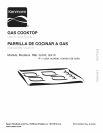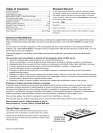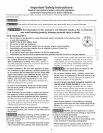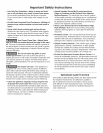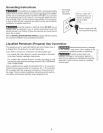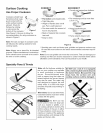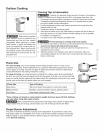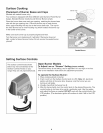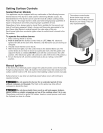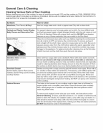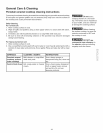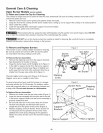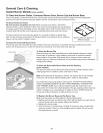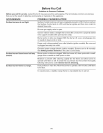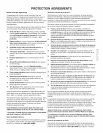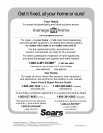
Surface Cooking
,2"
Safe canning requires
that harmful micro-organisms are
destroyed and the jars are sealed
completely. When canning in a water
bath canner, a gentle but steady boil
must be maintained continuously for
the required time. When canning with
a pressure canner, the pressure must
be maintained continuously for the
required time.
Canning Tips & Information
Canning can generate large amounts of steam. Use extreme
caution to prevent burns. Always raise the lid to vent steam away from you.
1. Use tested recipes and follow instructions carefully. Check with your local
Cooperative Agricultural Extension Service or a manufacturer of glass
jars for the latest canning information.
2. Use flat-bottomed canners only. Heat is spread more evenly when the
bottom surface is flat.
3. Center the canner on the burner grate.
4. Start with hot water and a high heat setting to reduce the time it takes to
bring the water to a boil; then reduce the heat setting as low as possible
to maintain a constant boil.
5. It is best to can small amounts and light loads.
Prevent damage to cooktop and burner grates:
1. Do not use water bath or pressure canners that extend more than one
inch (2.5 cm) beyond the edge of the burner grate.
2. Do not leave water bath or pressure canners on high heat for an
extended amount of time.
3. Alternate surface units between each batch to allow the units and
surrounding surfaces to cool down. Try to avoid canning on the same
burner unit all day.
Flame Size
For most cooking, start on the highest control setting and then turn to a lower one to
complete the process. Use the table below as a guide for determining proper flame size for
various types of cooking. The size and type of utensil used and the amount of food being
cooked will influence the setting needed for cooking.
For deep fat frying, use a thermometer and adjust the surface control knob accordingly. If
the fat is too cool, the food will absorb the fat and be greasy. If the fat is too hot, the food will
brown so quickly that the center will be undercooked. Do not attempt to deep fat fry too much
food at once as the food will neither brown nor cook properly.
*Flame Size Type of Cooking
High Flame Start most foods; bring water to a boil; pan broiling
Medium Flame Maintain a slow boil; thicken sauces, gravies; steam
Low Flame Keep foods cooking; poach; stew
*These settings are based on using medium-weight aluminum pans with lids. Settings
may vary when using other types of pans.
Never extend the flame beyond the outer edge of the utensil. A higher flame
simply wastes heat and energy, and increases your risk of being burned by the flame.
!iI...................
...........ii.......
Proper Burner Adjustments
The color of the flame is the key to proper burner adjustment. A good flame is clear, blue
and hardly visible in a well-lighted room. Each cone of flame should be steady and sharply
defined. Adjust or clean burner if flame is yellow-orange. To clean burner, see instructions
under General Cleaning.



